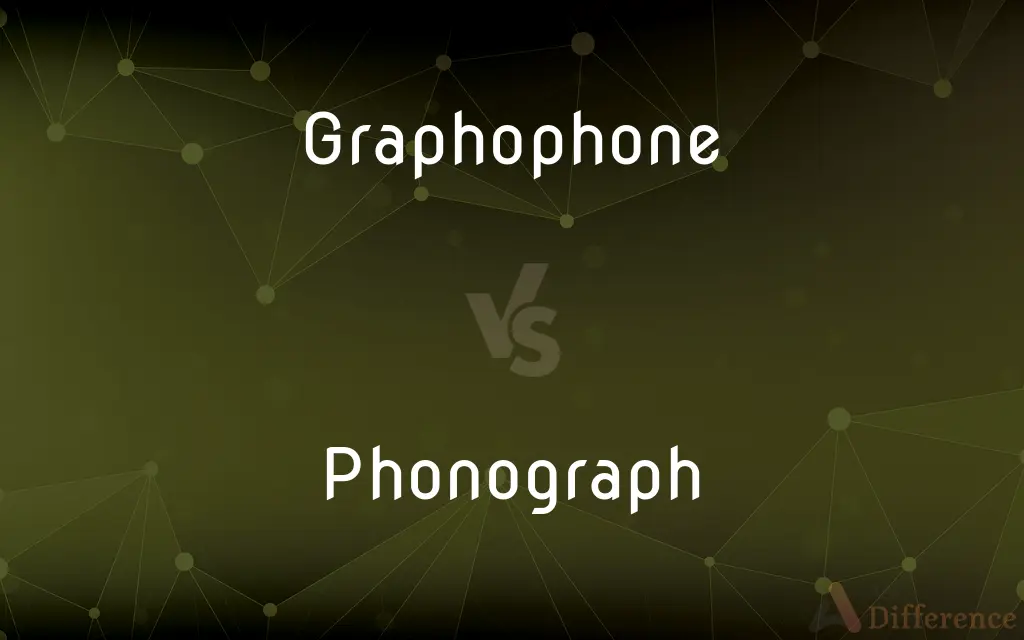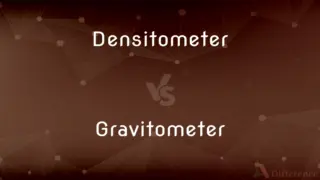Graphophone vs. Phonograph — What's the Difference?

Difference Between Graphophone and Phonograph
ADVERTISEMENT
Compare with Definitions
Graphophone
The Graphophone was the name and trademark of an improved version of the phonograph. It was invented at the Volta Laboratory established by Alexander Graham Bell in Washington, D.C., United States.
Phonograph
A phonograph, in its later forms also called a gramophone (as a trademark since 1887, as a generic name in the UK since 1910) or since the 1940s called a record player, is a device for the mechanical recording and reproduction of sound. The sound vibration waveforms are recorded as corresponding physical deviations of a spiral groove engraved, etched, incised, or impressed into the surface of a rotating cylinder or disc, called a "record".
Graphophone
An improvement on the phonograph, using a floating stylus to cut grooves into a wax-coated cardboard cylinder.
Phonograph
A machine that reproduces sound by means of a stylus in contact with a grooved rotating disk.
Graphophone
An optical device for showing (or photographing) an image when projected upon the atmosphere as a screen.
ADVERTISEMENT
Phonograph
A device that captures sound waves onto an engraved archive; a lathe.
Graphophone
A kind of photograph.
Phonograph
A device that records or plays sound from cylinder records.
Phonograph
A record player.
Phonograph
(dated) A character or symbol used to represent a sound, especially one used in phonography.
Phonograph
To record for playback by phonograph.
Phonograph
To transcribe into phonographic symbols.
Phonograph
A character or symbol used to represent a sound, esp. one used in phonography.
Phonograph
An instrument for the mechanical registration and reproduction of audible sounds, as articulate speech, etc. It consists of a rotating cylinder or disk covered with some material easily indented, as tinfoil, wax, paraffin, etc., above which is a thin plate carrying a stylus. As the plate vibrates under the influence of a sound, the stylus makes minute indentations or undulations in the soft material, and these, when the cylinder or disk is again turned, set the plate in vibration, and reproduce the sound.
Phonograph
An instrument for reproducing sounds, especially music, previously recorded on a plastic cylinder or disk as a pattern of bumps or wiggles in a groove. A needle (stylus) held in the groove is made to vibrate by motion (rotation) of the recording, and the vibrations caused by the bumps and wiggles are transmitted directly to a membrane, or first to an electronic amplifier circuit, thereby reproducing with greater or less fidelity the original sounds. A phonograph which is equipped with electronics enabling the playback of sound with high fidelity to the original is often called a hi-fi.
Phonograph
Machine in which rotating records cause a stylus to vibrate and the vibrations are amplified acoustically or electronically
Share Your Discovery

Previous Comparison
Hey vs. Hai
Next Comparison
Densitometer vs. Gravitometer














































